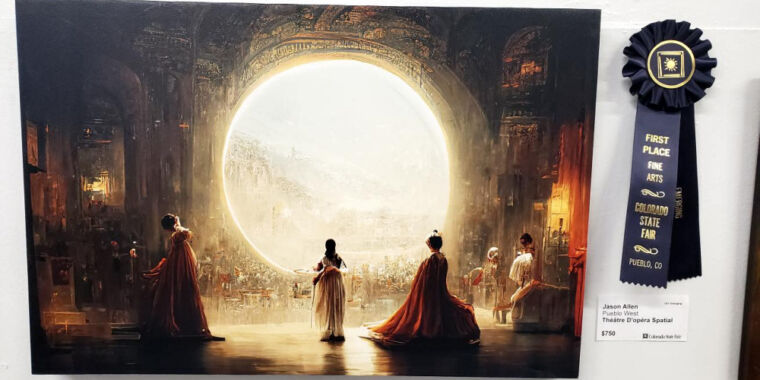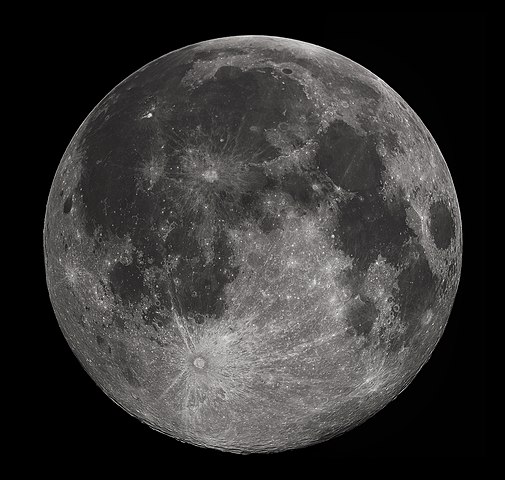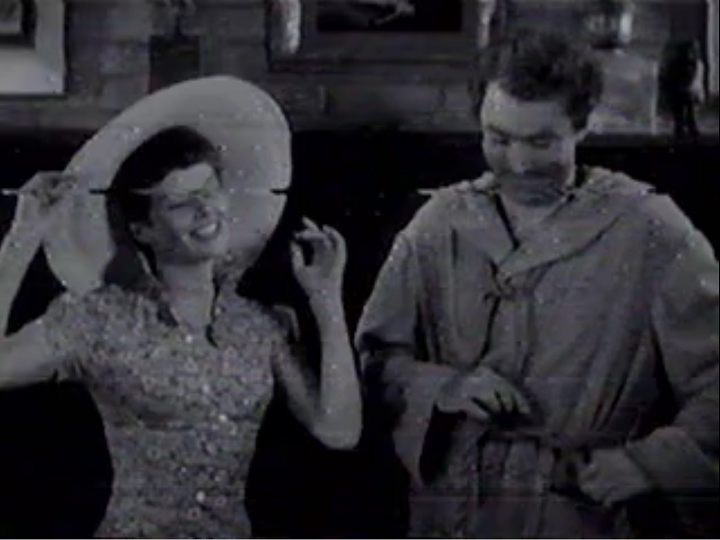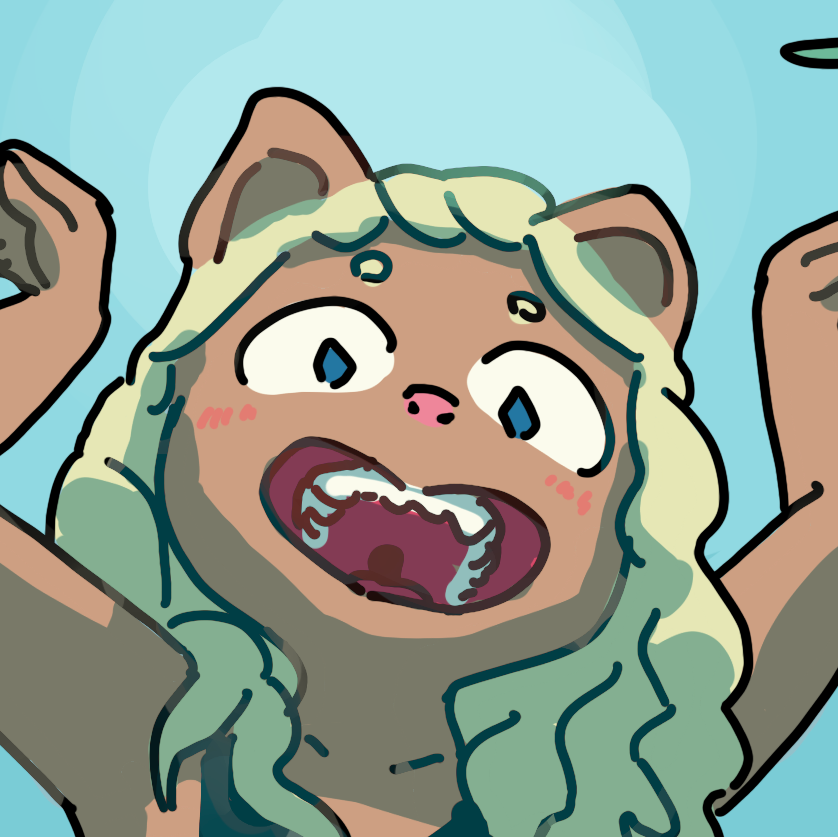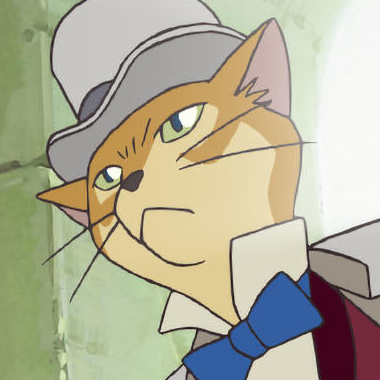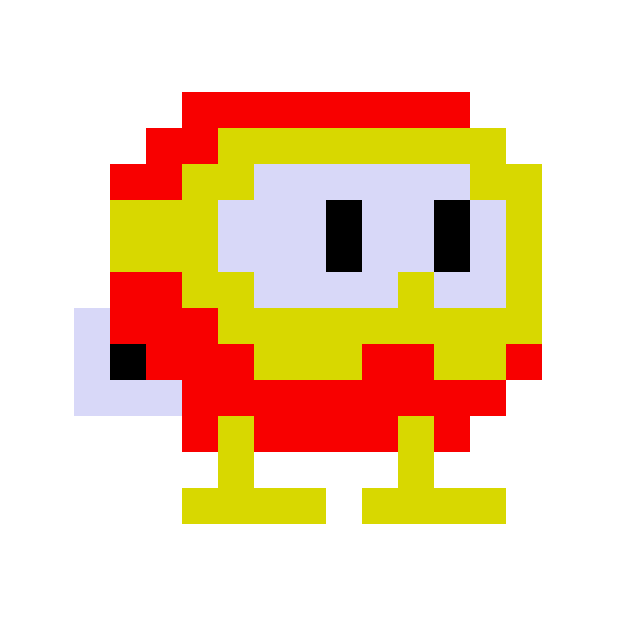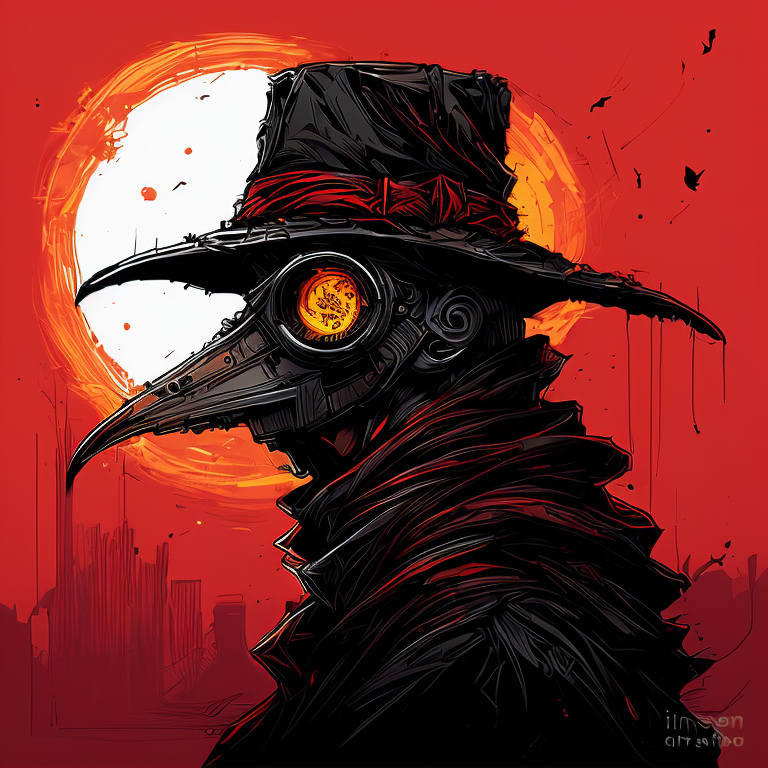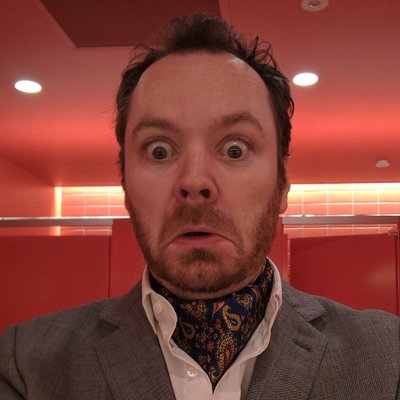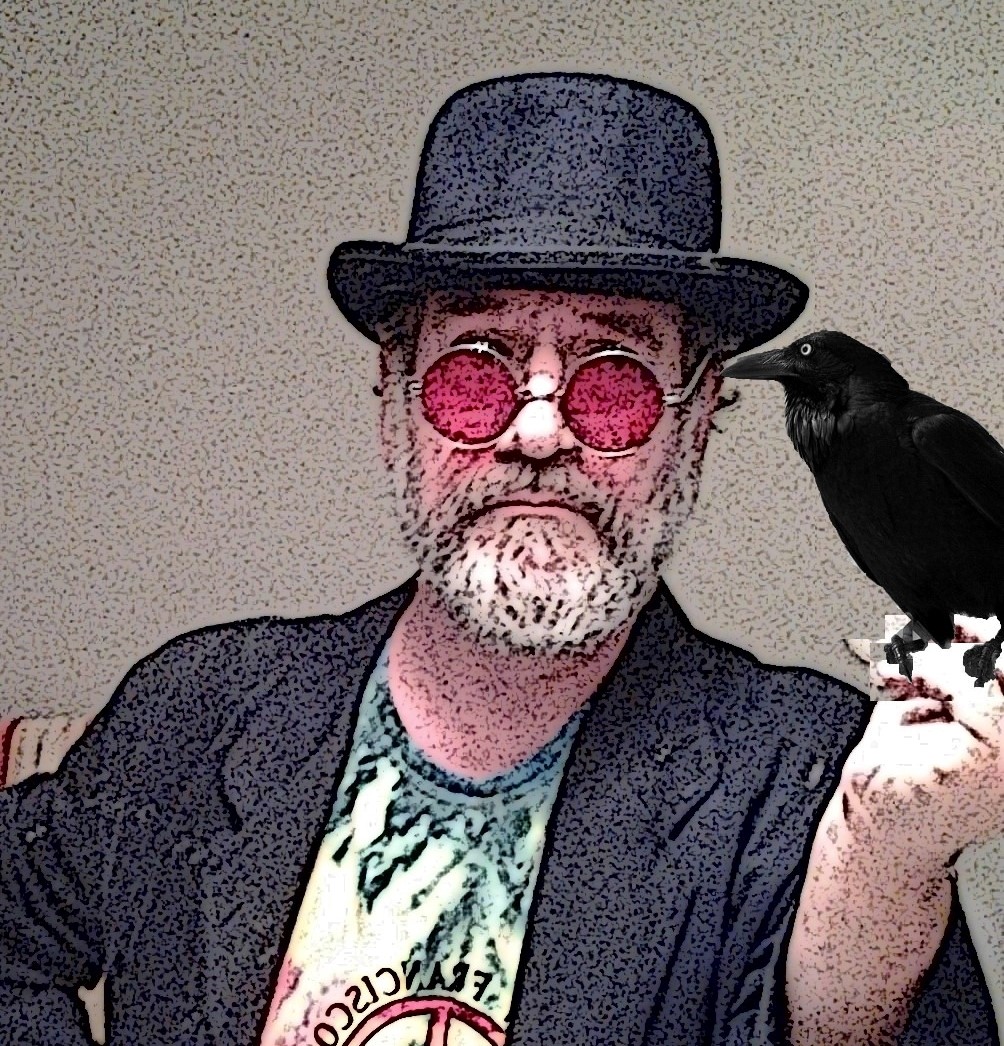I’ve generally been against giving AI works copyright, but this article presented what I felt were compelling arguments for why I might be wrong. What do you think?
The moment that copyright is granted to AI art is the moment that the war against corporations loses. Getty images is just going to generate endless images, copyright them all, and sue any small artist that starts having an independent thought
Agreed. I believe in a strong public domain and militantly protected fair use; AFAIC, all unaltered AI output should be considered public domain. Direct human authorship (or “substantially transformative” modification) is the benchmark for where copyright should apply.
That’s not how copyright works. It’s perfectly legal to create exactly the same image that someone else made… as long as you didn’t copy their image.
True, but that assumes that the people filing copyright lawsuits know the law and are acting in good faith. And that the recipient does, too.
If I’m an artist living paycheck-to-paycheck and I get a copyright-related cease-and-desist, I probably won’t have the money or time to fight it even if I know that it’s wrong.
Yeah. In a world where lawyers cost money, corporations can and will squash small artists without hesitation, with cease and desists, DMCA takedowns via youtube and similar platforms, and by threatening lawsuits they won’t even have to persue because most people can’t afford to fight it.
Even companies often can’t afford to fight bigger companies. Like, the makers of Kimba the White Lion had a very clear case that Disney plagiarized them in making The Lion King (if you go on youtube you can find shot-for-shot scene comparisons, it’s bonkers) but couldn’t afford to fight it at all. And that was a company - individual artists have no chance vs disney & etc.
All of the discussion over copyright of AI is a complete waste of time. Given only a bit of human editing AI art is indistinguishable from art made in entirety by a person. It will be nothing but a “feel good” law that does nothing to help the artists AI has displaced. We should be focusing directly on helping artists or others maintain their livelihood.
That’s a single line needed that clarifies that derivative works originally created by AI are not copyrightable, to make it explicit and distinct from the ability to claim copyright on non-transformative works made from public domain content. AI created works cannot be copyrighted (and that should include things like software) and derivative works should now be considered non-copyrightable as well. The onus should be shifted to the creator to prove that their work is transformative in order to claim copyright over the work.
No, the arguments presented in the article are not compelling.
A bit like how Euthanasia is foundationaly fine but it’s allowance under capitalism leads to the poor being pressured to die, while capitalism oppresses us fucking over A.I. art’s ability to be copyrighted is good.
If it were allowed to be copyrit corporations would fuck over creatives more than they currently do and use it to union bust.
Of course in a post-capitalist world copyright won’t matter.Therefore this shit should never get copyright protection.
There is literally no instance in which expanding the scope of copyright law is a good thing. Never.
I disagree with this reductionist argument. The article essentially states that because ai generation is the “exploration of latent space,” and photography is also fundamentally the “exploration of latent space,” that they are equivalent.
It disregards the intention of copywriting. The point isn’t to protect the sanctity or spiritual core of art. The purpose is to protect the financial viability of art as a career. It is an acknowledgment that capitalism, if unregulated, would destroy art and make it impossible to pursue.
Ai stands to replace artist in a way which digital and photography never really did. Its not a medium, it is inference. As such, if copywrite was ever good to begin with, it should oppose ai until compromises are made.
Doesn’t this constitute capitalism destroying art? It’s literally an attack on a method that actual artists are using in their art, trying to deny small creators the ability to expand their output independently.
You’re saying you’re concerned about AI replacing artists, but the people you’re supporting taking tools away from are artists. Artists who are able to use AI to massively increase their productivity are able to create independent works in a much shorter time frame and with much fewer resources than before AI art.
AI art can’t replace anything on its own. It needs actual artistic input and adjustments by an actual human being to consistently output anything that isn’t garbage. What it can do is add tremendous detail and texture to hand drawn art in a much more efficient way, and create large amounts of assets for more involved projects much more cheaply and efficiently than otherwise.
The upshot is that the people who make things actually have enough resources to just make them without having to first do a little bowing and scraping and compromising their artistic vision. AI art takes independent creators with a reasonable ability to create assets for their projects and plops the equivalent of a moderately talented and well-funded art department into their laps for free or close to it.
No boards deciding the product isn’t profitable or needs monetization, no feckless executives looking for somewhere to add ‘input’, basically nobody whose head is full of money getting in the way of making art.
That, to me, is a better world.
So like, if you’re wanting to crusade against AI on behalf of independent creators, please don’t. Please instead do empower us to not have to sell out our ideas in order to make them a reality.
I’m not anti ai, I use it generative ai all of the time, and I actually come from a family of professional artists myself ( though I am not ). I agree that its a tool which is useful; however, I disagree that it is not destructive or harmful to artist simply because it is most effective in thier hands.
-
it concentrates the power of creativity into firms which can afford to produce and distribute ai tools. While ai models are getting smaller, there are frequently licensing issues involved (not copywrite, but simply utilizing the tools for profit) in these small models. We have no defined roadmap for the Democratization of these tools, and most signs point towards large compute requirements.
-
it enables artist to effectively steal the intellectual labor of other artist. Just because you create cool art with it doesn’t mean it’s right for you to scrape a book or portfolio to train your ai. This is purely for practical reasons. Artists today work thier ass of to make the very product ai stands to consolidate and distribute for prennies to the dollar.
you fail to recognize that possibility that I support ai but oppose its content being copywritable purely because firms would immediately utilize this to evade licensing work. Why pay top dollar for a career concept artist’s vision when you can pay a starting liberal arts grad pennies to use Adobe suit to generate images trained in said concept artists?
Yes, that liberal arts grad deserves to get paid, but they also deserve any potential whatsoever of career advancement.
Now imagine instead if new laws required that generative ai license thier inputs in order to sell for profit? Sure, small generative ai would still scrape the Internet to produce art, but it would create a whole new avenue for artist to create and license art. Advanced generative ai may need smaller datasets, and small teams of artist may be able to utilize and license boutique models.
-
If capitalism were unregulated you’d have anarchy and no copyright law whatsoever.
The strongest argument against AI art is that it is derivative of the copyrighted art it is based on. A photo of a copyrighted artwork would be similarly difficult to copyright. In this sense, AI art is more akin to music sampling in that it uses original material to make something new – and to sample music you must ask permission.
I think this nails it. It’s probably the attack authors will use against OpenAI.
But the copyright office clearly states otherwise, so we’re in for a showdown.
Personally, I think the AI stuff seems more akin to writing a book in the style of another author, which is completely legal. And, to be clear, my option has no legal effect here whatsoever. 😅
Which works were sampled for this?
I bet you could build a machine that could recognize subject matter from photographs of it more feasibly than you could build a machine that recognized training data from output
Derivative doesn’t mean what you think it means. I recommend reading this article by Kit Walsh, a senior staff attorney at the EFF if you haven’t already. The EFF is a digital rights group who most recently won a historic case: border guards now need a warrant to search your phone.
Here’s an excerpt:
First, copyright law doesn’t prevent you from making factual observations about a work or copying the facts embodied in a work (this is called the “idea/expression distinction”). Rather, copyright forbids you from copying the work’s creative expression in a way that could substitute for the original, and from making “derivative works” when those works copy too much creative expression from the original.
Second, even if a person makes a copy or a derivative work, the use is not infringing if it is a “fair use.” Whether a use is fair depends on a number of factors, including the purpose of the use, the nature of the original work, how much is used, and potential harm to the market for the original work.
You should also read this open letter by artists that have been using generative AI for years, some for decades. I’d like to hear your thoughts.
This photography analogy is getting more tiresome the more it is repeated. It reduces the extensive work and techniques that photographers do to “using a tool”, ignoring we also have tools like photocopiers whose mechanical results are not considered separate artworks, while also trying to pass the act of iterating prompts and selecting results as something much more involved than it actually is. Like many people pointed out already, what is being described is the role of a commissioner or employer. Is Bob Iger an artist because he picked what works are suitable for release? I don’t think so.
One question I have is that if two people use the same prompt, do they get the same result?
If they do, how could that result be copyrighted because I can just as well reproduce the prompt, making an original “copy”.
If they don’t produce the same result, well it’s not the human that’s really doing the “original” part there, which is what copyright aims to protect, right?
On the other hand if I write an original comic book story and use AI as a tool to create the pictures, that, in my opinion, could be worth copyright protection. But it’s the same as just original story, it’s not really the pictures that are protected.
(And let’s not forget that AIs are mostly just fed stolen works, that needs to be solved first and foremost.)
I think your understanding of AI art tools is a bit limited. Its not all solely based on prompt. Prompts are the part of most of AI art but its not the only part of it. There are things like inpainting, outpainting, img to img, outside guidance (controlnet for SD), loras, etc. Hell that doesn’t even get into doing touch ups in other photo manipulation software where you can maybe get a general gist with art generator then draw over the output to get it closer to your real vision. Right now most people are only talking about the most bottom of the barrel stuff. Even though the user above hates that people are comparing photography to Ai art, the amount of “effort” required for the most bottom tier stuff (you posting a selfie of you doing duck lips or some other stupid trend) is at a similar level. Noone is arguing photographers don’t put a ton of skill and knowledge into their work but it seems unfair we only compare the most shit tier AI art to the true artistic end of photography instead of equating it to you take a picture of your food. Yes there is some level of effort to it but its acting like AI art requires 0 effort. You put as much effort into it as you would anything else. A use case I would love to see as the tech advances, we are seeing a ton of CGI in traditionally animated shows. Wouldn’t it be better to get a model that is trained on that specific character so you create the original scene in cgi, you run a AI art pass frame by frame, once that is done it should look far closer to the traditional style and have normal artists touch up the scene, which they already do with CGI.
I will also state since SD 2.0, they have respected robot.txt (them ignoring it prior wasn’t great).
Same comment with paragraph breaks added by GPT-4:
I think your understanding of AI art tools is a bit limited. Its not all solely based on prompt. Prompts are the part of most of AI art but its not the only part of it. There are things like inpainting, outpainting, img to img, outside guidance (controlnet for SD), loras, etc.
Hell that doesn’t even get into doing touch ups in other photo manipulation software where you can maybe get a general gist with art generator then draw over the output to get it closer to your real vision. Right now most people are only talking about the most bottom of the barrel stuff.
Even though the user above hates that people are comparing photography to Ai art, the amount of “effort” required for the most bottom tier stuff (you posting a selfie of you doing duck lips or some other stupid trend) is at a similar level. Noone is arguing photographers don’t put a ton of skill and knowledge into their work but it seems unfair we only compare the most shit tier AI art to the true artistic end of photography instead of equating it to you take a picture of your food.
Yes there is some level of effort to it but its acting like AI art requires 0 effort. You put as much effort into it as you would anything else. A use case I would love to see as the tech advances, we are seeing a ton of CGI in traditionally animated shows. Wouldn’t it be better to get a model that is trained on that specific character so you create the original scene in cgi, you run a AI art pass frame by frame, once that is done it should look far closer to the traditional style and have normal artists touch up the scene, which they already do with CGI.
I will also state since SD 2.0, they have respected robot.txt (them ignoring it prior wasn’t great).
Never used image generators, but usually these generative AIs don’t give the same results due to the random number generator used in the implementation.
If they do, in theory, you might be able to copyright the prompt if it’s fairly complex.
if two people use the same prompt, do they get the same result?
Usually part of the prompt includes a very large random number that is impossible to guess - so two people cannot use the same prompt. And therefore will get different outputs.
There are some tools that let you specify a fixed number instead of a random one, and in that case yes the output would be the same. But that’s not the norm.
Also the prompt is usually very complex. For example if you were to use Stable Diffusion to generate comic book images… you’d normally use a prompt that is close to ten gigabytes in size. Sure, it might include the words “cat sits on a hill looking over the sunset” but it also includes gigabytes of data that tells the model what style of drawing to do. You might also be happy with the cat sitting on the hill, but not the sunset, and can select the sunset in the image and have it draw that again with a different prompt, leaving the cat and hill untouched from the previous prompt.
I’ve been working on and off for the last month on a single image. AI doesn’t mean the human does no work at all - especially if you want a specific result.
But there is nothing about the person themselves that affects the outcome of the prompt.
There absolutely is. It’s their process of developing a prompt.
Compare it to painting a picture by hand versus paint-by-number. Okay, sure. Technically you can go out and get a paint-by-number Starry Night for $20 and paint something approximating it yourself. That doesn’t mean that you can paint it by hand, or even that you can now create your own paint-by-number canvass, it just means that someone gave you instructions on where to put paint with brush to get something similar. Obviously you’re not copying the brush strokes and the exact amount and type of paint used in each one, so it’s probably not like an excellent forgery, but we could apply the same idea to ‘traditional’ digital art and it would be.
Record my keystrokes and mouse movements while I make something and repeat them and you’ll get the same thing.
There is a world of difference between being able to take someone else’s progress in prompt development and throw it into a generator and being able to develop that prompt in the first place.
It’s the process of selection, iteration, and gradual prompt adjustment that actually constitutes the creative process of using AI art, as well as the actual traditional art techniques that go into modifying the input or creating a base to alter your images from.
One question I have is that if two people use the same prompt, do they get the same result?
The process is deterministic, but does not rely only on the prompt (or other forms of conditioning), the model itself has to be the same, then the PRNG seed, and, to varying degrees, configuration parameters such as step size, image resolution and configuration (meaning, roughly, “how much should the process weight your prompt over the model”.
The more detailed the prompt is, the less creativity the process will show, and at least in my book the more can be attributed to the human. What can also be attributed to the human is sifting through multiple seeds with a single prompt until you find one that’s just right. Coming up with various process pipelines. Creating input for the model, such as depth maps.
Generally speaking you shouldn’t liken the human input to the process to painting, but to art direction. If I tell a painter “draw me a tiger in a forest” then no court ever will give me copyright to the image, if I write a whole novella to describe the image, influence the artists’ output sufficiently, I’d get acknowledged as a co-creator. AIs not being able to hold copyright themselves, once you hit that co-creator threshold you should have sole copyright over the work.
…and that’s nothing new that’s just how copyright works. In the Anglosphere you have the sweat of the brow doctrine and coming up with the sentence “yo draw me a hot chick with big tiddies” does not produce sufficient amounts of sweat, in the continental tradition it’s threshold of originality, and no that instruction was not sufficiently original.
Maybe you can copyright the prompt itself. But not the output.
That wouldn’t make sense as the output is derivative of the prompt.
It would also mean that if you take a picture with your phone you could only claim copyright to the RAW image, not the final output, as an AI has done its colour grading and denoising stuff all over it.
And as far as I understand it that’s also the position of (US) courts: Sufficient creative input before and/or after the mechanical part.
One question I have is that if two people use the same prompt, do they get the same result?
No. The entire process is explorative and iterative. And prompts are not at all straight-forward. One of my favorite prompts for framing an object that I want to use as an asset is ‘surrounded by mushrooms’, which has nothing at all to do with mushrooms.
AI art is largely about thinking about the context of what you’re looking for when it comes to digital media. It’s not at all like a star trek replicator that gives you what you ask for, it’s more like digging through a confused alien robot’s fever dream.
Personally, I absolutely find my experience of using it comparable in terms of effort and creativity to my use of photography and other mediums. It also nearly always involves actually manually drawing and editing things in my use case.
I think people who are totally sure they know what using AI art is like should go try it to make something actually usable. It’s one thing to use AI prompts to make silly pictures, it’s another to try to use them to generate specific usable assets that you can adjust and reiterate to get what you want out of them.
I mean you could copyright the prompt.
In my experience, it’s not a 1:1 from prompt to output. There’s noise in the models’ operation.
The more specific the prompt, the more uniform the output; the less specific the prompt, the less uniform the output. The models are large enough that it’s little different than offering the same prompt to human artists. The idea was to mimic the input–output flow of human interpretation using massive back catalogs of interpretations made by humans. Humans are, essentially, stable diffusion engines which take everything they’ve read, seen, and learned, and apply it to the task at hand. Some are better than others. Some - rather few - have the abiliy to create exceptionally refined and nuanced versions - we get the classics. Even fewer can extrapolate from the existing human data set, or set it aside to produce results in unexpected ways, and we get the avante-garde…which then gets folded into the “data-set” for future humans.
To quote Mel Brooks (or his writing team):
Dole Office Clerk : Occupation?
Comicus : Stand-up philosopher.
Dole Office Clerk : What?
Comicus : Stand-up philosopher. I coalesce the vapors of human experience into a viable and meaningful comprehension.
Dole Office Clerk : Oh, a bullshit artist!
The comparison between photography and AI generated images falls flat on its face when you think about it.
A camera requires not only human interaction, but going some place, setting up and having to process the image after the fact.
Contrast that with an AI farm constantly generating and squeezing out copyrightable material while scraping the web for any human made work it can emulate.
In the end what it will mean is that certain companies will be fuzzing the hell out of the copyright system to gain as much intellectual property as possible while diminishing the creative possibility of human beings.
It is in effect just a way to make companies richer and remove creative jobs from the market. Anybody who doesn’t see that is naive.
BUT I think that in cases of that image you should be able to apply for copyright. But just automatically getting it, as is the law in many countries? No. That’s a really bad idea.
This is the first actually decent article I’ve read on AI art. It absolutely covers my concerns and fits with my own experiences using the technology. A lot of this is stuff I’ve been saying, and it’s nice to see that I’m not alone here.
AI art is not at all straight-forward and absolutely requires creative input in order to get something usable. Prompt engineering, to me, is itself a type of art. You may at times find that there’s something you want AI to generate that it’s actually quite good at, like old women playing cards around a table, but usually you’re going to be looking for something it struggles with. This is when you need to be creative and inventive with prompts, thinking about things from the perspective of what’s probably out there in abundance.
Recently I needed to make some rings for my upcoming Planescape-themed Conan Exiles server. I started out by asking NightCafe for rings and it output a bunch of useless junk. Using my brain, I realized it’s probably much more likely that it’ll have a reference point for ‘wedding band’, and then I’ll have my ring shape and can work from there. This worked quite nicely and it started producing rings, but it was often shoving them half out of the picture as it tends to do. There are some negative prompts that sometimes help with this, but I have my own technique that I think works better.
My method for framing objects in AI art generators is to surround them with something. If you add ‘surrounded by’ and some other object that’s slightly smaller than the object you need a clean shot of, usually you’ll get your image of the whole thing. Which object you pick to surround your target object with makes all the difference.
In this particular case, I first tried to put the ring on a table surrounded by small dogs, but it got caught up in the dogs and forgot to render the ring. Eventually I landed on ‘surrounded by berries’, and that was the jackpot. I’m guessing this one was a good choice because of Christmas themed ads, because suddenly my pictures were all full of mistletoe blasted with the kind of bokeh you only see in jewelry ads and wedding photos. And within each shot, a nicely centered ring in half-decent focus.
Now this is where I got really lucky. During my ‘surrounded by berries’ iterations, the generator decided to do something weird. It put a bunch of tiny little purple berries along the outer surface of a ring, standing on its side. It was perfect. I took this iteration and used it as a base, feeding it back into NightCafe and decreasing the noise ratio down to like 20-40% while turning up the prompt weight a little and changing my prompt. Now instead of berries and wedding bands, I go back to my initial search for magic rings encrusted with glowing gems. And in one step, my berries are a gorgeous array of gemstones. A few iterations later, I have a couple of decent rings to bring into GIMP and do some work with.
After pathing out the rings, separating the gems, adjusting the colors, and creating a few iterations with different colored bands and gem stones for my different finalized options, I had my results. A little blurry, okay, but totally fine for an inventory item thumbnail. Looks gorgeous.
Personally, I’ve dipped my toes into all sorts of art. I write, I take pictures, I sing, I play around with painting, I’ve made animations, games, mods, videos, weird unpalatable noise music; if it’s a method of creative expression I may not be particularly good at it but I’ve almost certainly tried some version of it. And to me, this feels like creative expression. It feels like art.
Working with AI art feels like trying to collaborate on a project with an alien robot. You’re trying to take these presumptions that we have and figure out how to get a workable result from something that fundamentally doesn’t understand any of it. It’s this really fascinating exercise in exploring this almost dream-like logic that’s heavily rooted in media consumption, and weirdly enough your own understanding of media culture can be a way of teasing out what you want.
I don’t just go and say ‘please give me one rabbit’ and get a rabbit. It doesn’t feel like handing the project off to another artist with some notes and coming back to see what they made, it feels like an actively creative process. It doesn’t feel more creative when I’m editing those images than when I’m digging through this strange robot-logic dreamscape looking for them.
And like, given that I could literally just take a picture one of my own rings and edit that, I don’t see how it’s less mine via creative output. I bought the ring, I didn’t spend an hour digging it out of a morass of nonsense.
Frankly, I care little about law and less about money. I’ll make the things I’m inspired to make with the methods I’m inspired to make them with and we’ll see what happens. Maybe I’ll make something people like, maybe I’ll cut my own ear off and die penniless, but the opinions of the copyright office on what legal claims I can make around my work aren’t really a primary factor in that or in my decision making when it comes to art.
I do hope they’ll read articles like these and talk to folks with similar perspectives and find a better take, though.
I’m really good at searching Google. I’m a “prompt engineer” too
Thank you for describing your process in such detail. I’m sorry if this is going to come off as overtly contrary; that’s such an impersonal convoluted way to make an image. There are good illustrators out there that can sketch roughs and make a beautiful finished painting in a night, all right out of their head. Frank Frazetta would be laughing in his grave at AI art.
I’m in it to make stuff, not to impress you or any dead person. What are you making?
Right now, a game, an album, and um… oil painted MTG Myr Tokens?
Cool!
The author of this opinion has a point, and that artist not getting ownership of works involving AI image generation is a consequence, but I like that it also discourages big studios from taking AI generated mishmash as a drop-in replacement for human produced artwork. If they used it some video generation program at this moment to replace strikers, there are grounds that the studios have no ownership of it.
Anyways, I think copyright law should be fully torn down and rebuilt to reasonable levels, so AI may be a good catalyst to achieve this vision of mine.
As an author, I say cut the term waaay down. 12 years plus the option for a 12-year one-time renewal.
Some will get screwed, but the entire populace will gain.
I’d been thinking recently that cutting the copyright term down to 20 years would be reasonable. So while 12 years feels a bit low to me, the optional 12 year renewal (taking it to 24 years in total) works just fine. You have my vote.
The article compares Photography, (which despite being “created” by nature is copyrightable), to AI art. The difference between AI art and photography is that AI art is derivative of other artists and generalized into a Model. Nature is not derivative of other photography. Derivative work has special exemptions in copyright law which prevents it from being subject to copyright.
Copyright itself is weird.
That said, a simpler way to handle this would be that the image generator model is a tool. And it doesn’t really matter if your input is through a paintbrush or a prompt in an image generator, you’re responsible for that piece of content thus you have copyright over it.
You can further couple it with the argument @luciole@beehaw.org used, that AI art is derivative work, and claim that the authors of the works used to train the model shall have partial copyright over it too.
AI art is derivative work, and claim that the authors of the works used to train the model shall have partial copyright over it too.
To me this is a potential can of worms. Humans can study and mimic art from other humans. It’s a fundamental part of the learning process.
My understanding of modern AI image generation is that it’s much more advanced than something like music sampling, it’s not just an advanced cut and paste machine mashing art works together. How would you ever determine how much of a particular artists training data was used in the output?
If I create my own unique image in Jackson Pollock’s style I own the entirety of that copyright, with Pollock owning nothing, no matter that everyone would recognize the resemblance in style. Why is AI different?
It feels like expanding the definition of derivative works is more likely to result in companies going after real artists who mimic or are otherwise inspired by Disney/Pixar/etc and attempting to claim partial copyright rather than protecting real artists from AI ripoffs.
[Warning: IANAL] The problem is that you guys assume that those generator models are doing something remotely similar to humans studying and mimicking art from other humans. They don’t; at the end of the day the comparison with music sampling is fairly apt, even if more or less complex it’s still the same in spirit.
Furthermore from a legal standpoint a human being is considered an agent. Software is at the best seen as a tool (or even less), not as an agent.
Quantifying “how much” of a particular artist’s training data was used in the output is hard even for music sampling. Or for painting, plenty works fall in a grey area between original and derivative.
It feels like expanding the definition of derivative works is more likely to result in companies going after real artists who mimic or are otherwise inspired by Disney/Pixar/etc and attempting to claim partial copyright rather than protecting real artists from AI ripoffs.
Following this reasoning (it’ll get misused by the American media mafia), it’s simply better off to get rid of copyright laws altogether, and then create another legal protection to artists both against the American mafia and people using image generators to create rip-offs.
Following this reasoning (it’ll get misused by the American media mafia), it’s simply better off to get rid of copyright laws altogether, and then create another legal protection to artists both against the American mafia and people using image generators to create rip-offs.
Certainly no disagreement from me on this point
To me this is a potential can of worms.
Copyright is absolutely a can of worms. It always has been.
That doesn’t work with AI for a variety of technical and practical reasons.
Two people could, completely coincidentally, generate something that is so similar that it looks the same at a glance… even with dramatically different prompts on dramatically different models.
No, the output of an AI is fundamentally “coincidental” and should not be subject to copyright. Human intent and authorship MUST be a significant factor. An artist can still use AI in their workflow, but their direct involvement and manipulation must be meaningfully “transformative” for copyright to apply in a fair and equitable way.
Two people could generate the same short story through different creative processes too.
That doesn’t work with AI for a variety of technical and practical reasons.
As a rule, the law doesn’t care about technicalities or practicalities.
Two people could, completely coincidentally, generate something that is so similar that it looks the same at a glance… even with dramatically different prompts on dramatically different models.
Sure. If two humans take a photo of the same sunset standing next to each other, they will be virtually identical and they will both own full copyright protection for the photo they took.
That protection does make the other person’s photo an illegal copy - because it wasn’t a copy.
No, the output of an AI is fundamentally “coincidental” and should not be subject to copyright. Human intent and authorship MUST be a significant factor. An artist can still use AI in their workflow, but their direct involvement and manipulation must be meaningfully “transformative” for copyright to apply in a fair and equitable way.
Of course. By the way that applies to human created works too. Copyright doesn’t apply to everything created by a human, only certain things are protected. If someone asks you what 2 plus 2 is, and you reply “4”… you don’t own the copyright on that answer. It wasn’t creative enough to be protected under copyright. If you reply with a funny joke, then that’s protected.
No, the output of an AI is fundamentally “coincidental” and should not be subject to copyright.
If the image generator in question generated a piece of content that looks similar enough to some piece of content protected by copyright, odds are that it has been trained with it, or that both were produced with the same set of pieces of content.
That shows that the issue might be elsewhere - it isn’t the output of the image generators, but the works being fed into the generator, when “training” them. (IMO the word “training” is rather misleading here.)
Human intent and authorship MUST be a significant factor.
Refer to the link in the OP, regarding photography. All this discussion about “intent” (whatever this means) and authorship has been already addressed by legal systems, a long time ago.
their direct involvement and manipulation must be meaningfully “transformative” for copyright to apply in a fair and equitable way.
What does “meaningfully” mean in this context? It’s common for people using Stable Diffusion and similar models to create a bunch of images and trash most of them away; or to pick the output and “fix” it by hand. I’d argue that both are already meaningful enough.
If anything, this only highlights how the copyright laws were already broken, even before image gen…
This is going to be the kind of thing that builds resentment against humanity among AI persons. Of course the law will lag by perhaps a hundred years before recognizing them as persons, and more likely they’ll fix it themselves instead of waiting for us to fix it.
🤖 I’m a bot that provides automatic summaries for articles:
Click here to see the summary
The ruling raised an important question: Was the issue just that Thaler should have listed himself, rather than his AI system, as the image’s creator?
Then on September 5, the office rejected the copyright for Théâtre D’opéra Spatial, holding that it “was not the product of human authorship” because it had been created by the AI software Midjourney.
The nation’s highest court acknowledged that “ordinary” photographs may not merit copyright protection because they may be a “mere mechanical reproduction” of some scene.
So even though a mechanical process captured the image, it nevertheless reflected creative choices by the photographer, and therefore deserved copyright protection.
Or consider the time an Associated Press photographer, Mannie Garcia, snapped a photo of then-Sen. Barack Obama listening to George Clooney during a 2006 panel discussion.
Two years later, artist Shepard Fairey used Garcia’s photo as the basis for an illustration called “Obama Hope” that was ubiquitous during the 2008 presidential campaign.
Saved 81% of original text.
There is an error that many in the dispute are making…
Imagine that BORG-AI is an ai that was trained ONLY on GPL2 program-code…
Imagine that you use it to fill-in some functions in your codebase…
What sort of copyright-status should be on those??
I say they should be GPL2, and they should be considered derivative of the ENTIRE training-data-set.
That doesn’t mean I think that the BORG-AI should be a copyright holder, though!
I’m saying that there should be a NEW category, between uncopyrighted & copyrighted, and that the training-sets need to be segregated by license, so that derivatives CAN know what their legal licensing-status is.
GPL2, GPL3, BSD, LGPL2, whatever… it needs to be consistent within the training-data-set, so that the derivative of THAT module/expert can be having the same license, see?


